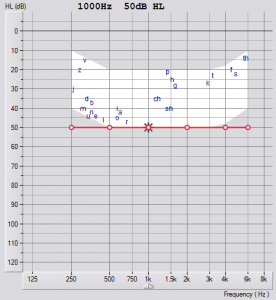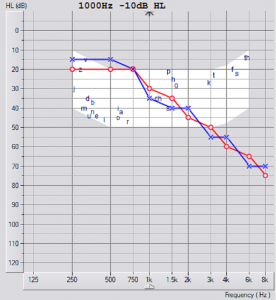Bands are used to control volume settings at different frequencies, if you look at an audiogram you will see that it typically ranges from 125Hz to 8000Hz so if someone had a flat line loss at say 50dB (Fig1) then each frequency should, in theory require roughly the same amplification to ‘lift it’ to the normal thresholds. However, an audiogram with a dynamic fluctuation in the frequencies would require access to more bands in order to ‘map’ the prescribed amplification in line with the changes in hearing thresholds (Fig2)


Channels break up the frequency range into individual channels and are used to produce the processing strategies employed in the aid such as noise reduction, directionality, feedback management, compression and expansion. The more channels the hearing aid has the more fine tuned it can be. When a hearing aid has many channels we can adjust each frequency that is too loud without sacrificing the things you want to hear.
Thus, just the way a high-resolution picture gives you a sharper image, more bands and channels provide you with improved sound quality. More channels will provide better “resolution” on the frequencies and more bands will mean better “resolution” on the volume… thus allowing your hearing aid to match your audiogram more accurately.
There have been a number of studies attempting to define the optimum number of channels and these are easily accessible via a web search. Go back to the mid 90’s and research suggested that Speech discrimination clearly improved as the number of channels increased from 4 to 8 channels with little change above 8 (Yund and Buckles 1995).
However, as hearing aid technology has advanced, the on-board computing capability in modern devices is now capable of handling more instructions and can make use of the extra channels to provide complex auditory scene analysis for better sound environment identification. The extra channels can also improve a hearing aids feedback handling characteristics, enhance noise reduction handling and allow for more accurate directional microphone manipulation using polar plot models.
